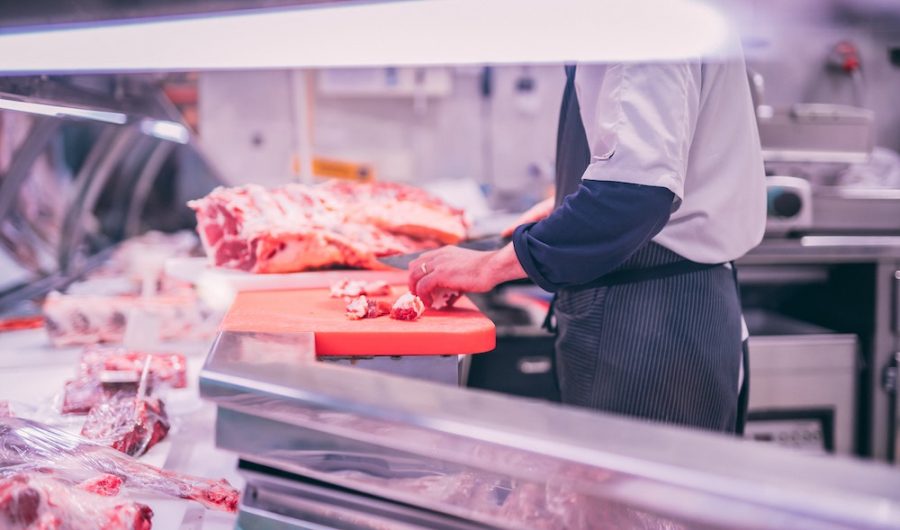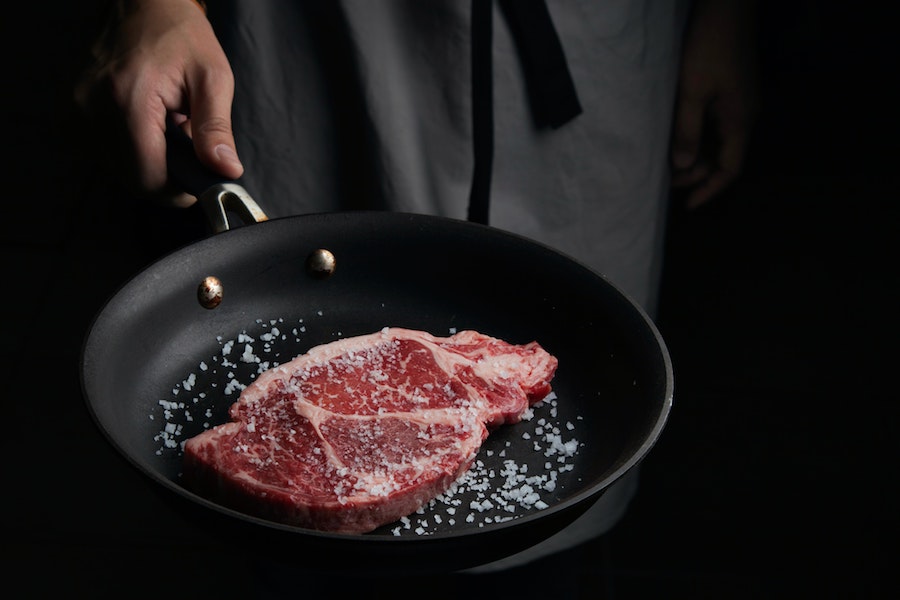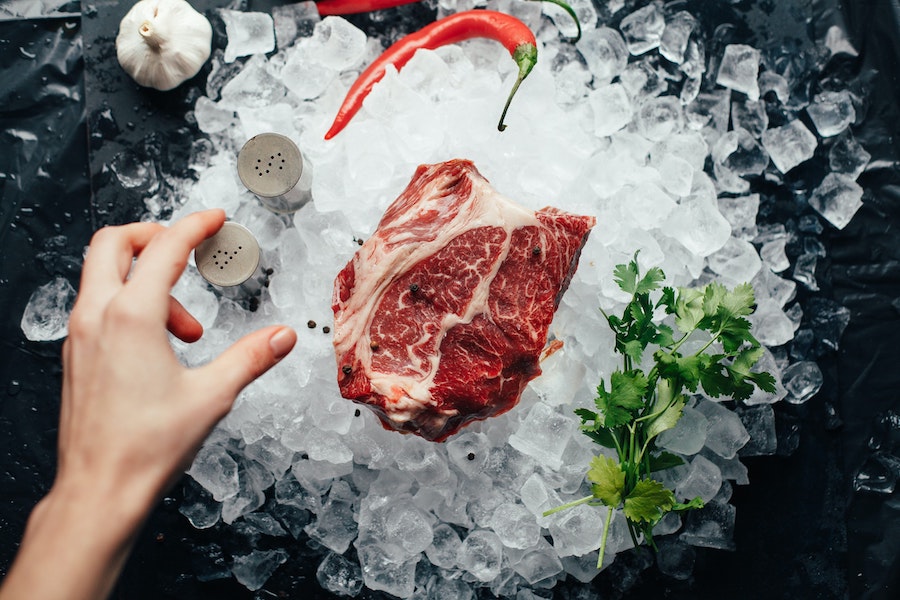Whether you prefer medium-rare or well-done, steak is perfect for everyone, especially when eaten together with your family and loved ones.
Don’t worry, you don’t need to use many tools or have expert-like skills to cook the best steak. Nevertheless, you still have to follow some rules to achieve the best results.
If this will be your first time cooking a steak, don’t worry! The following tips and tricks will get you from zero to one hundred in no time.
CHOOSING YOUR MEAT

The cut of your steak depends on your preference, and of course, budget. Each variety of cut has a distinct flavor and tenderness.
Fillet: Prized as the most premium and expensive cut, it’s the most tender. It has little fat and is best served rare.
Sirloin: It’s considered as a common cut and prime steak, which many steak lovers like. This cut has a fine and firm texture and it’s rich in flavor. Best served medium-rare.
Rib-eye and tomahawk: Rib-eye has a tender texture and is known for the marbled fat running through the meat. The fat melts and incorporates into the meat when cooked, giving it a rich flavor and texture. Tomahawk is a rib-eye steak that has at least five inches of rib bone left intact that looks like a handle.
Flank steak: A cut that is lean and boneless. It’s also a cheaper cut with a lot of intense flavors. Flank steaks are great for barbecues and are best served medium-rare.
Flat-iron: This steak is cut from the shoulder blade and is now tagged as a good alternative to more expensive cuts. It has a lot of beefy flavors and is neatly marbled. Flat-iron steak needs to be cooked no more than medium to turn out juicy and tender.
Onglet: Also known as hanger steak. Onglet is a rope-shaped meat that has loads of beefy flavor. Some people find its flavor to be a bit strong due to the overtones of the liver and kidney. This cut should not be cooked beyond rare if you don’t want it to be tough. It is best served with strongly flavored sauces.
Rump steak: This is the least expensive variety of steak. Cooking it beyond medium will result in a tough steak since this cut is firmer in texture.
T-bone: This is a combination of the beef short loin or New York strip, and tenderloin (filet mignon), separated by a bone, that results from the way it’s cut. T-bones are best finished inside the oven to make sure they’re evenly cooked.
USE SIMPLE TOOLS

You don’t need a bunch of kitchen tools to cook a perfect steak. Just take out a sharp knife, a food thermometer that can easily be inserted into your meat, a wood or charcoal grill (if you wish to do outdoor cooking) or a pan for indoor cooking. For best results indoors, use a thick pan that allows an even distribution of heat, like a cast-iron skillet.
SIZE MATTERS
The cooking times and temperature for cooking your steaks can vary according to the cut. And even if you have the same cut of meat, its cooking time depends on its thickness — and that should be considered every time you cook.
Check this Steak Magnet guide that you can place right on your fridge for easy access.
EVEN STEAKS NEED REST

Steaks are best when bought and cooked fresh. However, if the availability of fresh meat is limited, it’s still good to use frozen meat.
Bear in mind that cooking cold meat may result in an unevenly-cooked steak, since the heat will have a hard time reaching the center.
To avoid this from happening, let the steak rest at the counter for at least 30 minutes (depending on its thickness) before cooking.
Aside from resting before cooking, it is also necessary to allow the steak to rest after you cook it. This allows all the juices inside the meat to settle down and its fibers to relax. Also, this process will prevent the juices from running out of your chopping board, resulting in a rough and dry steak.
You can rest small-to-medium-sized steaks for 10 to 15 minutes, while larger cuts of steak may take 15 to 25 minutes.
SEASON IT WELL

Steak lovers often prefer to enjoy the rich flavor of a quality steak by adding only a generous rub of salt and freshly-cracked black pepper.
Do this before you rest your meat, preferably 2 hours, to allow the seasoning to go deep into your steak.
For a different experience, you can try to baste it the French way.
Do this by cooking the steak in flavorless oils like sunflower, vegetable or groundnut for about ⅔ of the preferred cooking time, flip it, then toss in some butter and herbs like rosemary, thyme, and garlic, then baste or pour the oil over the meat using a spoon for the remaining ⅓ of the cooking time.
SEAR HOT
When cooking your steak, it’s highly important to start with a hot cooking surface. This method will help caramelize the outside of your steak to lock in the flavor and juices.
Try this if you want to achieve the exceptionality of steak-house quality steak — crispy on the outside, yet juicy and tender on the inside.
CHECK IF IT IS COOKED
There’re many methods to check the doneness or the internal temperature of a steak, but generally, here’s a good idea:
Steak’s doneness has five (5) classifications; Rare, Medium Rare, Medium, Medium Well, and Well Done.
You can use a meat thermometer to prevent overcooking, undercooking, or burning your steak. It also helps to make sure that you make the perfect steak every single time.
Here’s a Steak Magnet that outlines the ideal internal temperatures depending on how you like your steak.
SEASON AFTER SLICING

Not everybody shares the same palate, thus, sometimes we may need a different amount of saltiness in order to enjoy our food. If this is the case, the best way to season after cooking is to do it after you slice your steak.
Don’t forget to put a bowl or canister of salt within everyone’s reach on the table to let them also season their steak as they like it.
For the best flavor and seasoning, use sea salt.
Slicing tip: Slice your steak against the grains for a tender piece of steak.
![]()
There you have it! Follow these tips and you will surely have the perfect steak to share with your family and loved ones.
Looking for something to pair up with your perfect steak? You may try these recipes.
STEAK-TERM BUSTER!
